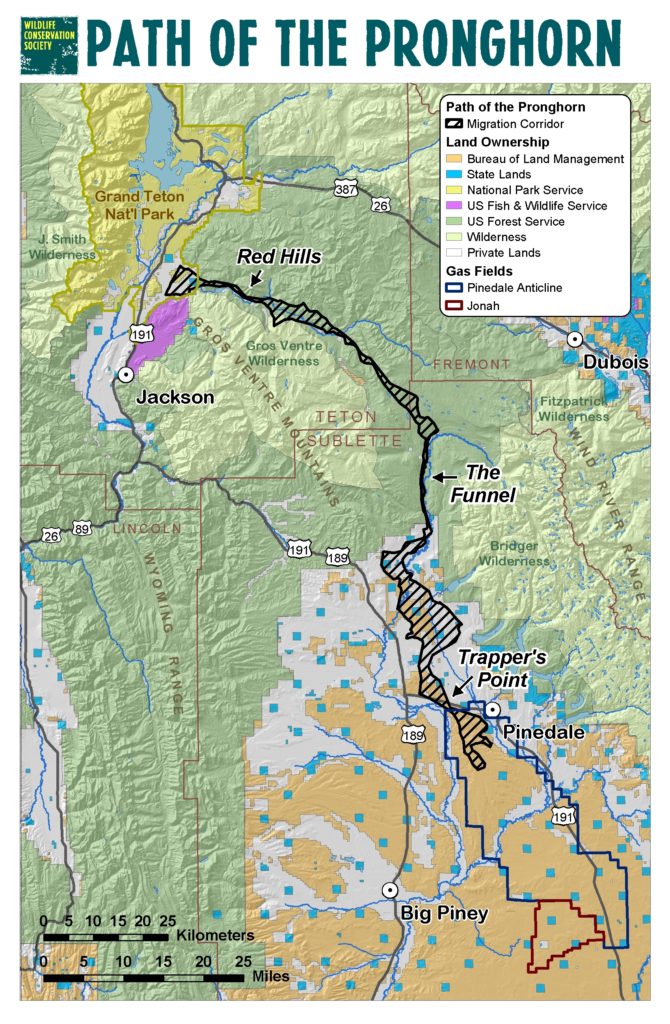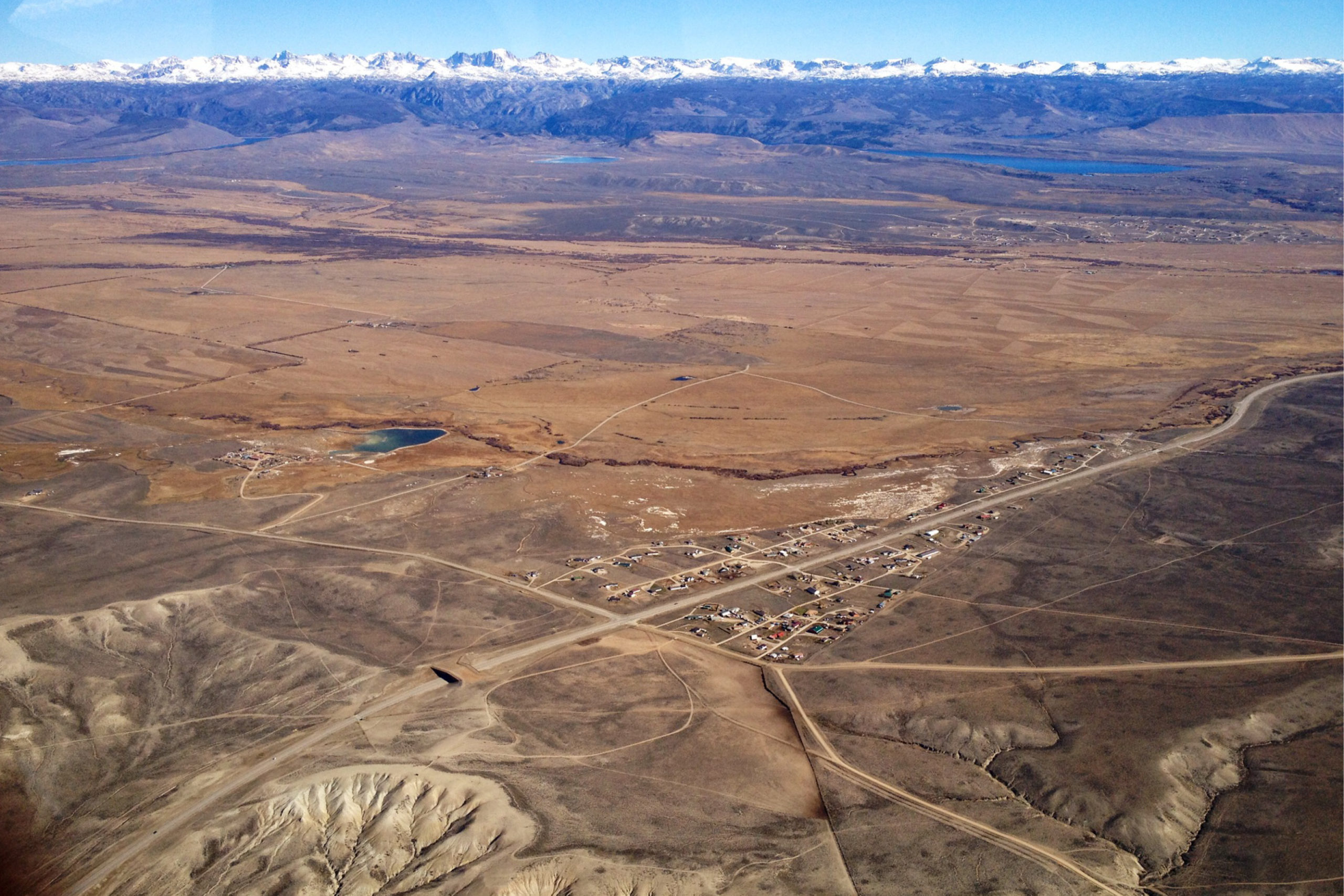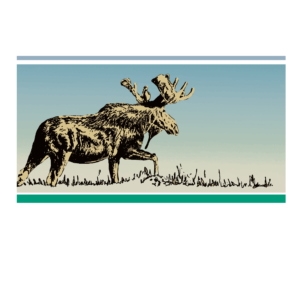An Iconic Western Mammal

Map: Path of the Pronghorn migration corridor courtesy of the Wildlife Conservation Society.
The pronghorn is an iconic Western mammal visually similar, but not closely related to, an African antelope. The pronghorn holds the title of fastest land animal in North America (reaching sprint speeds of 60 miles per hour) and fossil evidence indicates it has made a living in the West’s sagebrush country since the last Ice Age.
The Path of the Pronghorn is an epic, long-distance migration route traveled biannually by a portion of Wyoming’s pronghorn population, including several hundred individuals which summer in Jackson Hole. This 70+ km long, 2 km wide route—punctuated by bottlenecks sometimes as narrow as 120 meters—links the animals’ summer range in Grand Teton National Park with winter range in the state’s Green River Basin.
The Path of the Pronghorn is considered a conservation success because it is a federally designated migration corridor. This designation has led to far ranging benefits, from raising public awareness about migration to the construction of wildlife-friendly fences along the route. It has even been successful in the deferment of oil and gas leases within the Bridger-Teton National Forest section of this migration corridor.
So why is the Path of the Pronghorn unique and worth protecting? Prior to colonization, scientists estimate 30 million or more of these speedy ungulates once roamed the Western landscape. By the end of the 19th Century, land-use changes and hunting as a result of European westward expansion had decimated the pronghorn population, which fell an estimated 99% from its former numbers. Conservation efforts eventually helped to stabilize the species and today Wyoming represents a relative pronghorn stronghold; an estimated 400,000 individuals make their home in the state. However, increasing habitat loss will likely continue to impact Wyoming’s wild pronghorn. As a long-distance migrator, pronghorn remain vulnerable not only to the loss of critical winter or summer habitat, but to the severing of their migration pathways by human development.
The future viability of this migration corridor, a route traversed by these animals for thousands of years, will take continued compromise and buy-in from a diverse group of stakeholders committed to a shared goal of maintaining the natural treasure that is the Path of the Pronghorn.
The Path of the Pronghorn is part of a long-distance migration route followed by pronghorn which summer in Grand Teton National Park and have wintering-grounds sometimes as far south as Rock Springs. Credit: National Fish and Wildlife Foundation.
.
Jackson Hole Wildlife Foundation
Being Wild Jackson Hole is an effort lead by the Jackson Hole Wildlife Foundation to help ensure survival of the wild spirit of this special place by embracing and promoting environmental stewardship, along with the values and actions that support it. We encourage visitors to learn about and participate fully in our conservation efforts.
Funded by:





